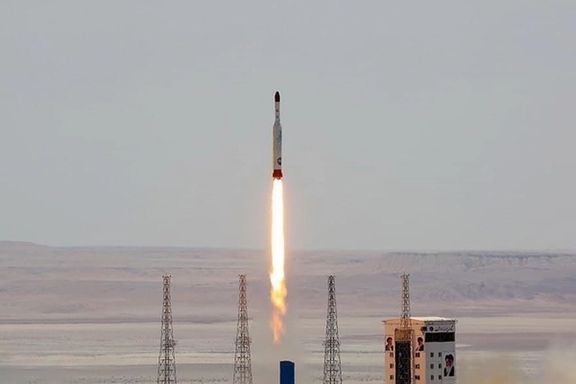Iran Launches Rocket Into Space As Nuclear Talks Continue

Iran announced Thursday a rocket launch carrying three research devices amid nuclear talks with world powers, although it was unclear if any reached orbit.

Iran announced Thursday a rocket launch carrying three research devices amid nuclear talks with world powers, although it was unclear if any reached orbit.
Ahmed Hosseini, a defense ministry spokesman, said the ‘Simorgh’ satellite-carrier rocket had set the three devices at 470 kilometers (290 miles) altitude. "The intended research objectives of this launch were achieved," he said, in comments broadcast on state television. "This was done as a preliminary launch ... God willing, we will have an operational launch soon."
Iran, which has one of the widest missile programs in the Middle East, has suffered several failed satellite launches in recent years due to technical issues.
The launch came with negotiations continuing in Vienna to revive Iran’s 2015 nuclear agreement with world powers, the JCPOA (Joint Comprehensive Plan of Action). Some foreign observers and governments have argued that Iran's space program is a cover for testing of ballistic missiles.
Israel and the United States have said it contravenes United Nations Security Council resolution 2231, which in endorsing the JCPOA banned Iran from “any activity related to ballistic missiles designed to be capable of delivering nuclear weapons.” Washington left the JCPOA in 2018, imposing ‘maximum pressure sanctions’ on Iran.
Similar previous launches were criticized by the US. There has been speculation that Thursday’s launch might be a message, for audiences foreign and domestic, that Iran is negotiating from strength in Vienna and will not accept demands that it unliterally scale back its missile program. Iranian strategists believe missile defense is needed to counterbalance the threat of advanced mainly US-supplied strike aircraft held by Israel and the Arab Gulf states.
Simorgh − named after a mythical bird, similar to the phoenix, that was the emblem of the Sassanian dynasty (224-642AD) and remains a national symbol − is a larger orbital launcher than previous models but all are expendable small-capacity orbital space launch vehicles.
Simorgh is also called Safir-2, following the Safir launcher that in February 2009 placed the Omid satellite into an orbit with a 245.2km apogee. In April 2020 Qassed lifted Iran's first military satellite, dubbed Noor, into orbit, with its initial stage propelled by a Ghadr medium-range ballistic missile.
In mid-December, Issa Zarepour, Iran’s communication minister promised “good news” over launching a satellite in March, after reports of preparations at a launch site following a series of setbacks with failed launches.
Zarepour said Iran’s space program had been put on the backburner during President Hassan Rouhani’s eight-year administration (2013-21), but was now to have its budget enhanced. The draft budget of President Ebrahim Raisi for fiscal year 2022-23, which is still to be approved by parliament, would increase the allocation for Iran’s space program by a factor of 12.
The Centre for Strategic and International Studies argued in a 2018 report that “neither the Arab states nor Iran provide anything resembling credible reporting on their military expenditures and arms transfers.”